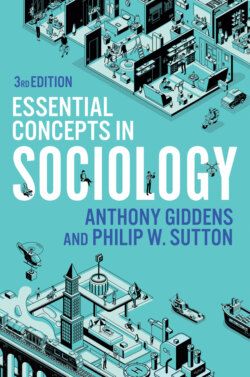Читать книгу Essential Concepts in Sociology - Anthony Giddens - Страница 87
Critical Points
ОглавлениеMarx offered one way of reframing the problem, arguing that it is indeed people who make history (agency), but that they do not do so under circumstances they have freely chosen (structure). Giddens’s (1984) structuration theory owes something to this idea. For Giddens, structure and agency imply each other. Structure is enabling, not just constraining, and makes creative action possible, but the repeated actions of many individuals work to reproduce and change the social structure. The focus of Giddens’s theory is social practices that are ‘ordered across space and time’, and it is through these that social structures are reproduced. However, Giddens sees ‘structure’ as the rules and resources that enable social practices to be reproduced over time, not as abstract, dominating, external forces. This ‘duality of structure’ is a way of rethinking the previous dichotomy.
Pierre Bourdieu’s theorizing is also explicitly aimed at bridging the structure–agency divide. Bourdieu uses the concept of practice to do this. People have embedded, internalized mental structures – their ‘habitus’ – enabling them to handle and understand the social world. Habitus is the product of a long period spent inhabiting the social world from a specific position (such as class location), and individual habitus therefore varies considerably. Like Giddens, Bourdieu sees many practices developing from this, but for Bourdieu practice always takes place within a ‘field’ – a sphere of life or realm of society such as the arts, the economy, politics, education, and so on. Fields are arenas for competitive struggle in which a variety of resources (types of capital) are used. So, in this model, structure and agency are again seen as intimately related, not opposed.
